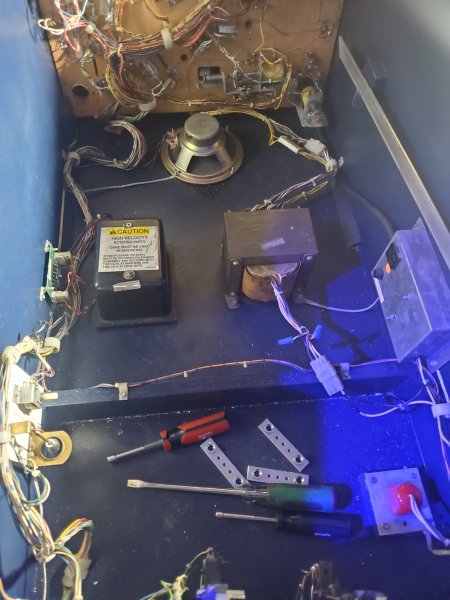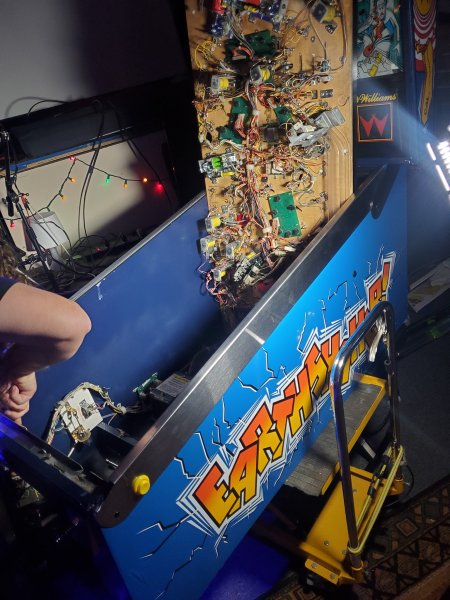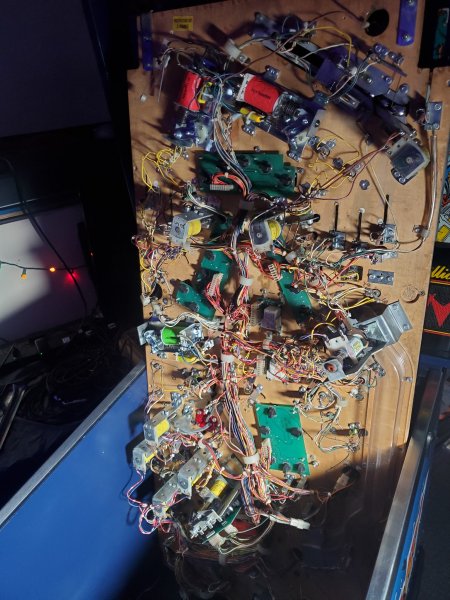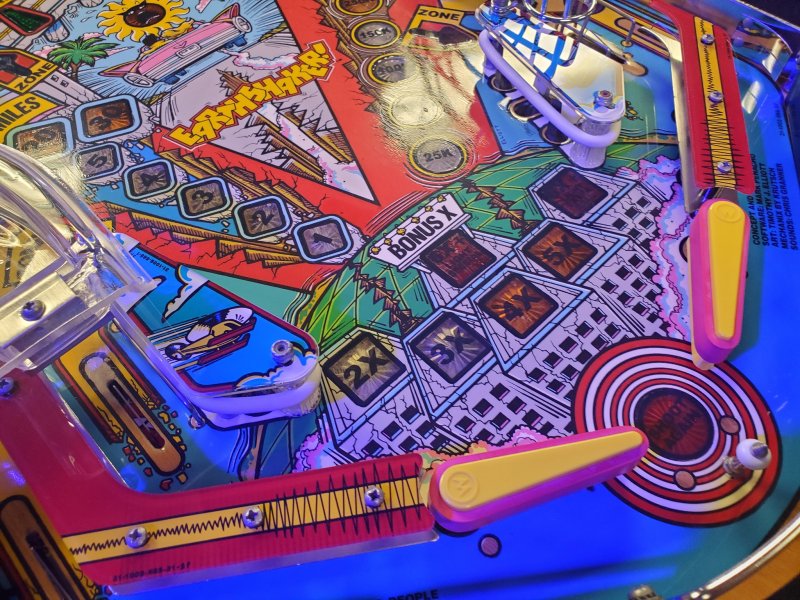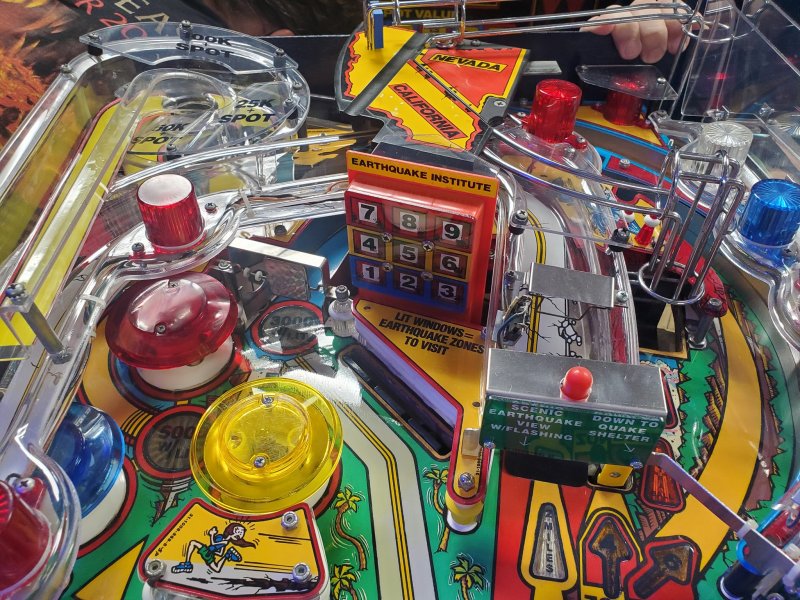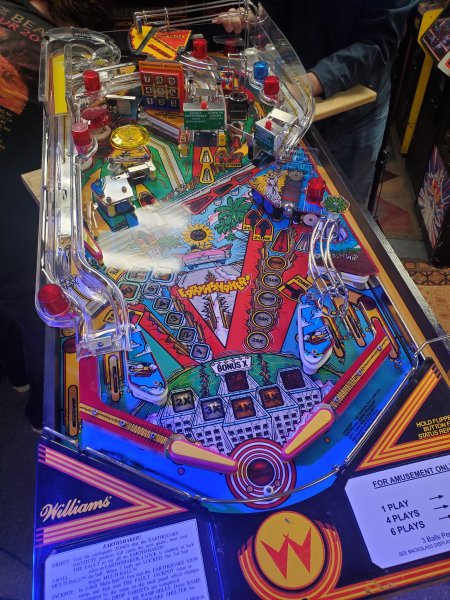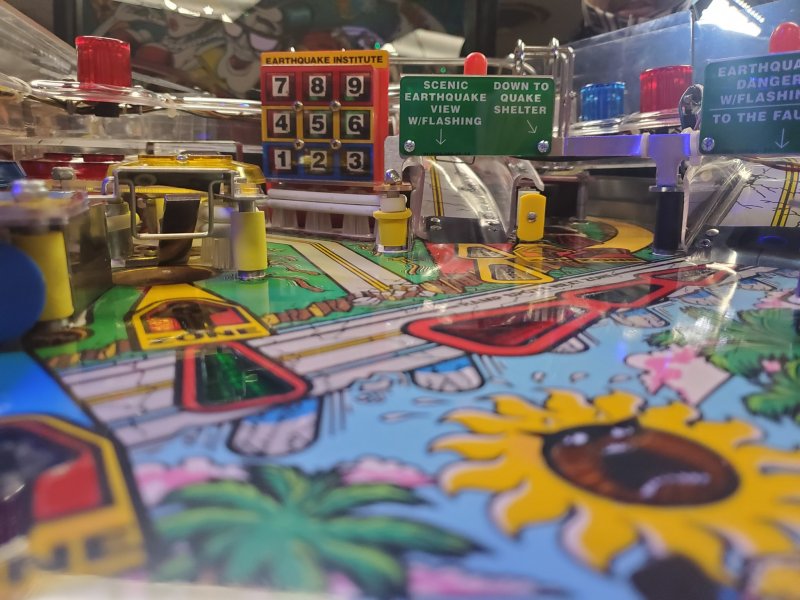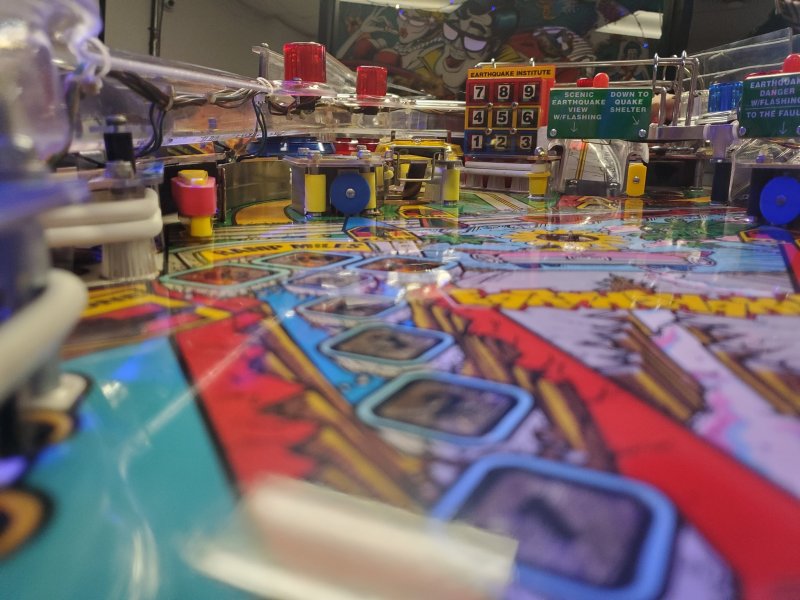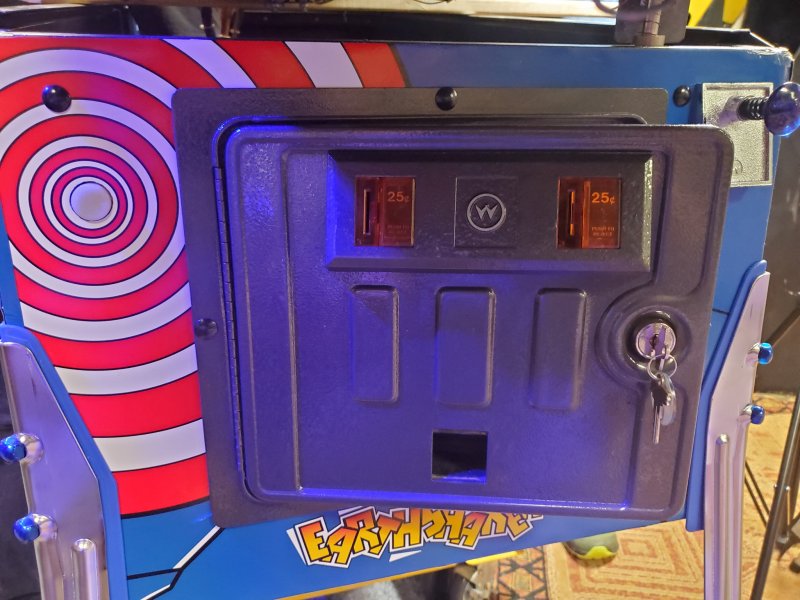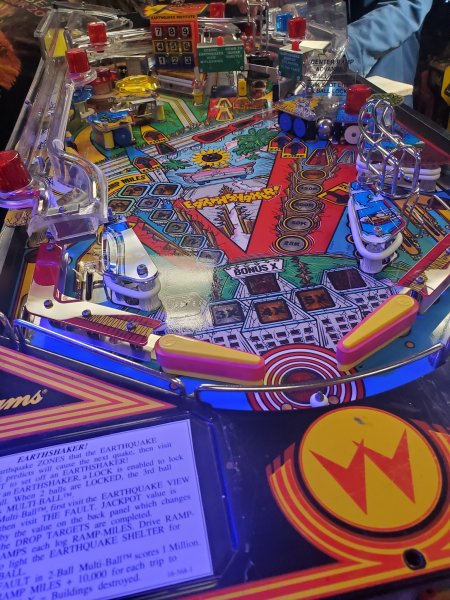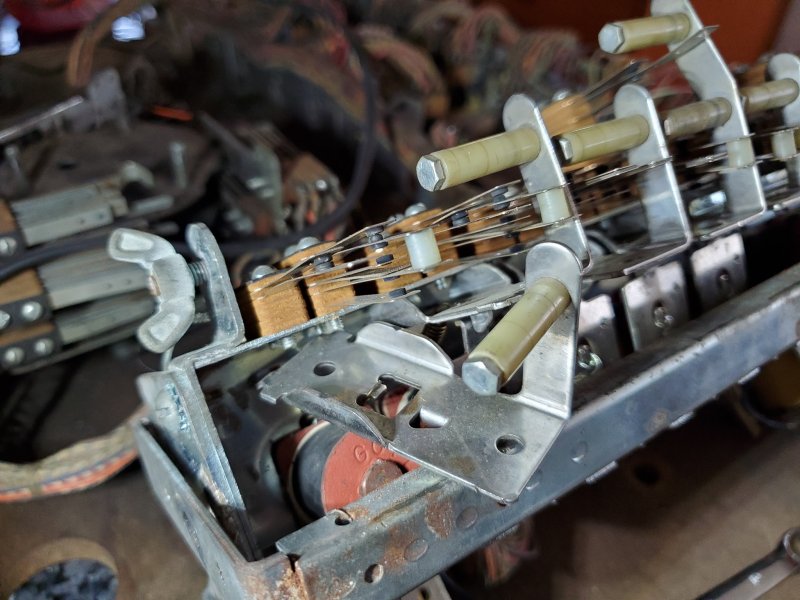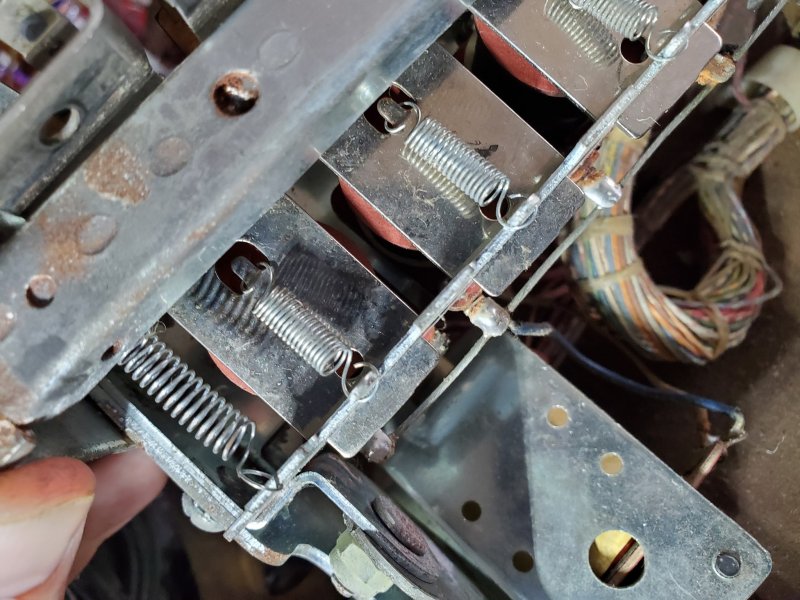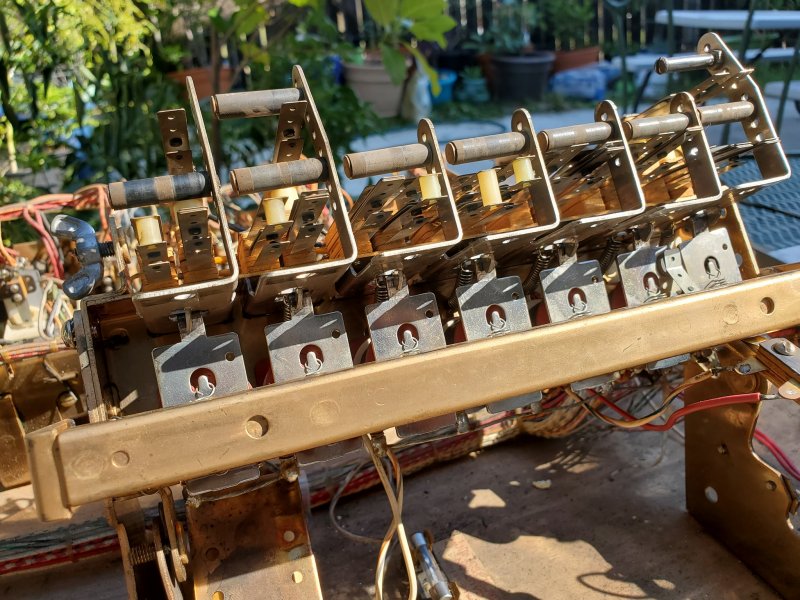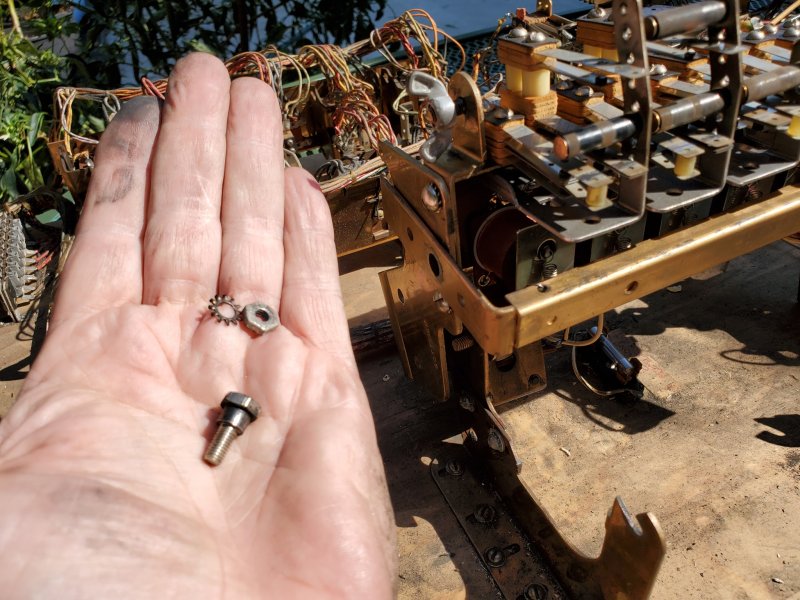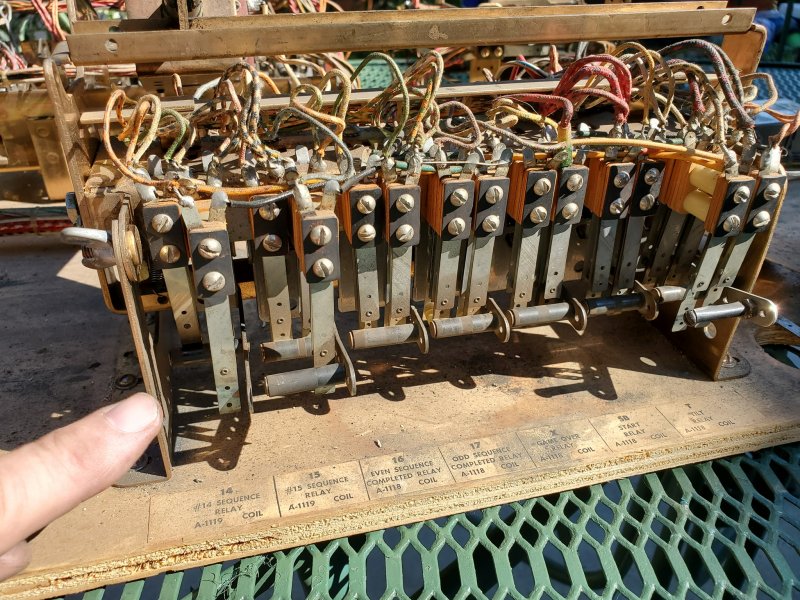This is a common problem that happens with old electro-mechanical pinball machines. One minute it’s playing fine, then the next there’s a loud buzz and/or the scoring runs continuously or doesn’t score properly. What’s the deal with that? I’m going to show you one of the most common causes.
Category Archives: Repair
What happened to the Earthquaked Earthshaker pinball?
Over the years, probably one of the most asked questions I’ve gotten from people is, “Whatever happened to that Earthshaker you were working on?”
People are referring to this video series: Williams Pinball Earthshaker Looks Like It was in an actual Earthquake!
I picked up this game nine years ago. Pulled it out of a filthy house where the game had sat for years, no legs, no glass, non-operational, in a house full of cats. The game looks like it has numerous things living in it, and the cabinet became a cat scratching post.
The more I looked at it, the more problems I found. The game had been monkeyed with in more ways than I’d seen with any other machine. Nonetheless, I managed to actually, finally get the game to boot up, but it was so horribly mangled in so many ways, it would take years to acquire the necessary parts at reasonable prices, so I stored the game and would pick up parts here and there over the years, hoping one day to restore the game.
Last year a friend inquired about the game and I realized, I didn’t have the time any time soon to tackle this project. I had so much going on I decided to sell it to a friend who I knew would invest the time needed to bring this treasure back. So I gave him all the parts I’d collected, including original cabinet artwork that I got from Gene Cunningham of Illinois Pinball.
The other day, my buddy Josh contacted me to let me know he had finished the restoration and if he could bring the game to the PinChurch to share with others. I jumped at the chance to see what progress had been made with the game, and share with everybody else.
Before I show you the AFTER, take a look at these two BEFORE videos:
You can find more details on the repairs and early restoration here.
Here’s a video of the restored Earthshaker – check it out – amazing work!
Here are some pictures:
How to work on electro-mechanical switch stacks on pinball machines
Switch stacks are the primary parts of electro-mechanical pinball machines, triggering game activity. I go over in this video, how they work, the different types of switch configurations, and how to clean and maintain them so they work reliably.
Be sure to subscribe at: https://youtube.com/pinchurch?sub_confirmation=1
Pinball Feature: The Inner Workings of an Electro Mechanical Game
It was a nice day, so I decided to take a pinball backplane, bottom board and bring it outside and dissect the basic components there and discuss how they work.
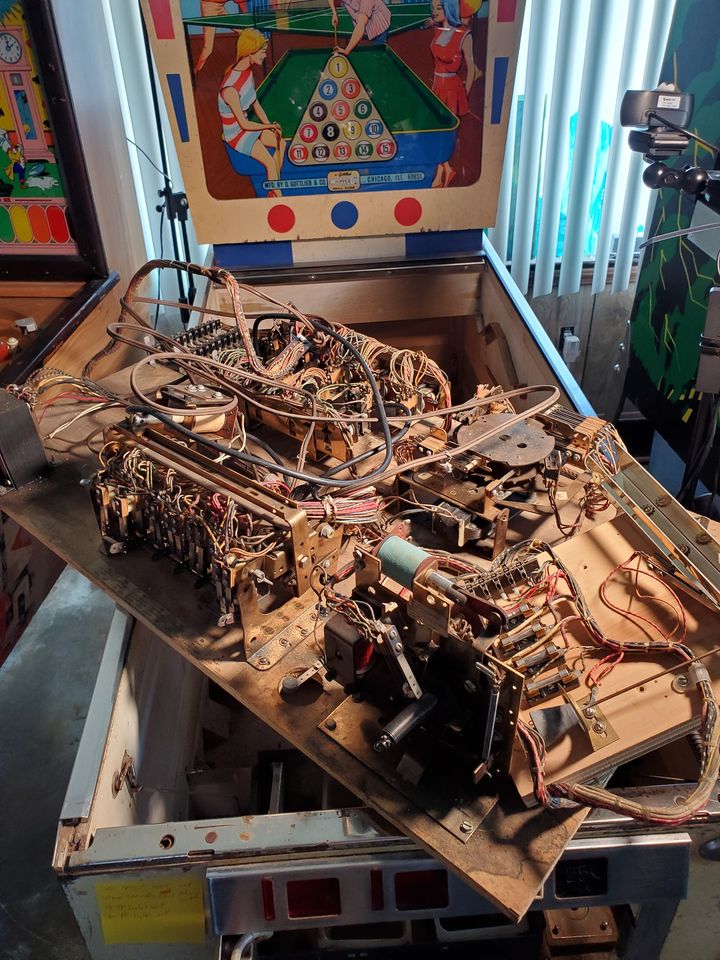
How to replace or repair EM pinball latch relay parts/articulating arm/rollers
Ok, that’s a mouthful huh? This is a continuation of a previous series of videos I’ve done on fixing deep ruleset issues in EM games, and now that we’ve found what’s wrong, let’s fix it!
First, here’s a video on how to replace the latch relay – there’s another post where I demonstrate how to remove the backplane from the game so it’s easier to work on.
And in this next video, if you don’t have a replacement part, I show how with a little ingenuity and a #4 tap, you can fabricate your own roller for the articulating arm.
Now that it’s fixed… let’s see how the game plays!
How to remove the inside/backplane from an EM pinball machine?
Sometimes when you have to do more extensive work to relays in an old electro-mechanical game, you can’t bend over the cabinet. You need to get all those assemblies on a bench to service. I go over how you can remove the insides of a game so you can more easily access the components.
The next video in this series goes into repairing a broken latch relay.
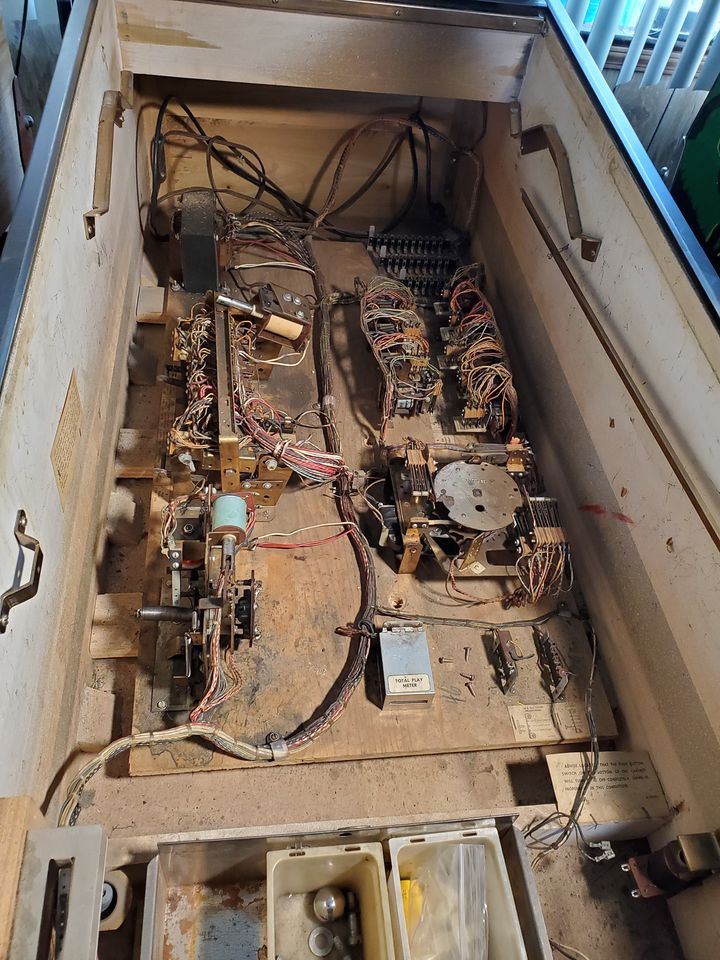
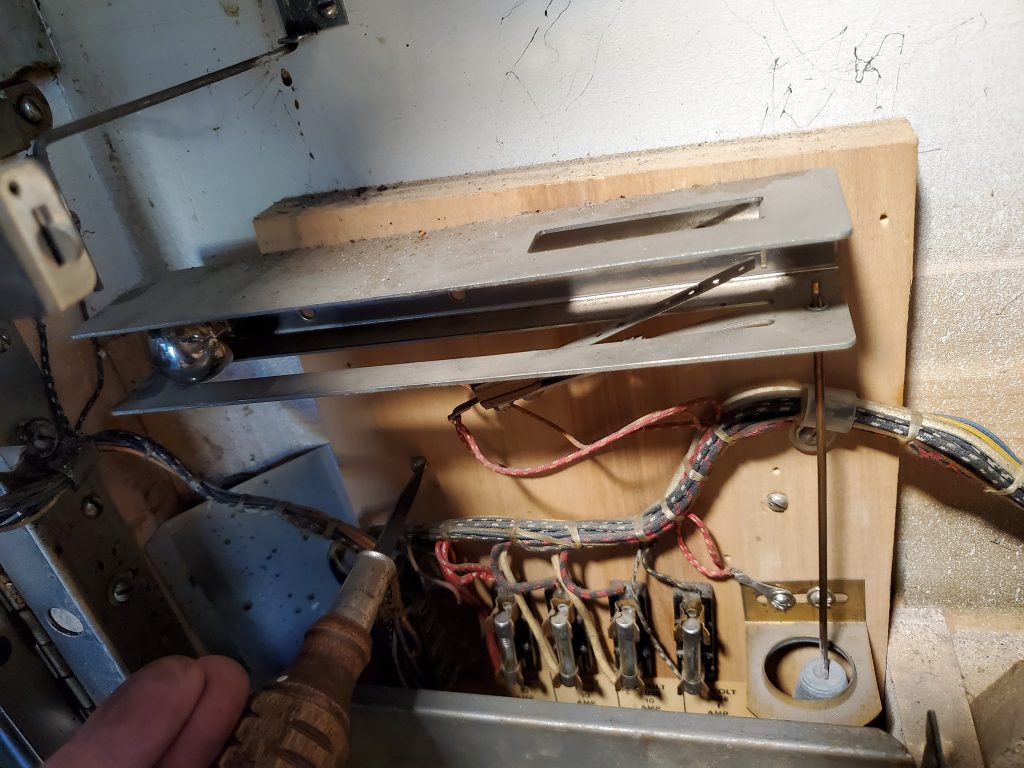
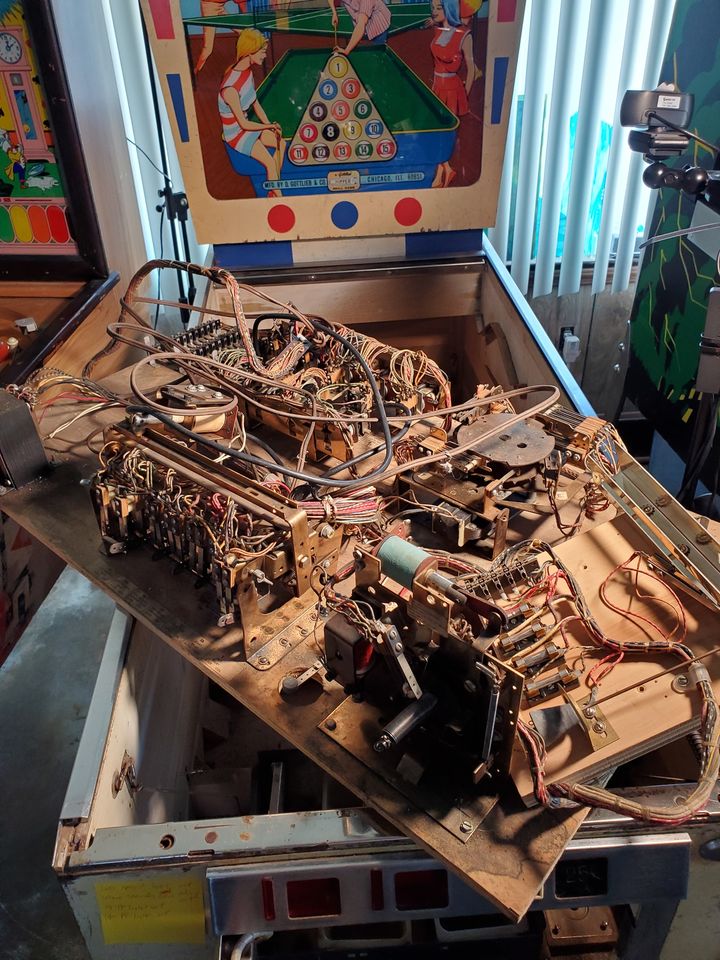
Diagnosing gameplay issues on EM pinball machines (Target Pool)
This is a fun video that I think is quite informative. I go over the process of how I discovered a feature in the game was not working. It’s a good example of how even supposedly “fully-working” games are often not fully working and many people don’t realize.
So what do you do when you discover a play feature isn’t working? I go over how we can diagnose and identify/fix the problem, even without having schematics. Check it out!

